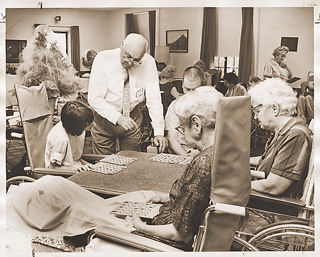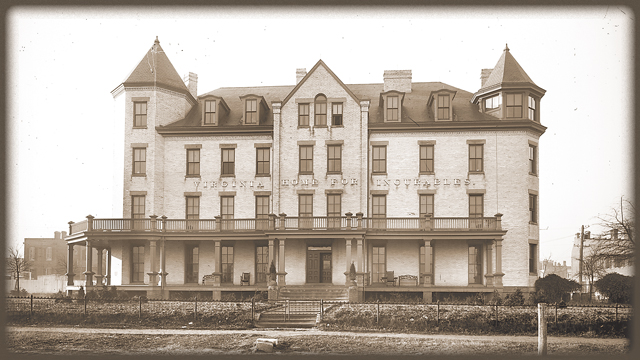In 1865, a Richmond society teenager named Mary Tinsley Greenhow fell off her horse. As a result, she was paralyzed and required constant care. And although her family could afford the round-the-clock care she needed, Greenhow became preoccupied with those with the same needs who were less fortunate.

Mary began to crochet mats, which she sold to friends and family. The small amount she made from the sale of these mats seeded a fund that subsequently established the first residential care facility for adults with permanent disabilities in Virginia. In 1894, this home opened on Ross Street with eight residents. Through tireless fundraising and due to overwhelming need, Greenhow’s project quickly expanded, requiring a larger building, constructed just four years later. The second facility on West Broad Street (pictured here), across from today’s Science Museum of Virginia, could accommodate twenty patients. Greenhow remained president of the home for ten years, with an all-female board overseeing operations and volunteerism, on which the residents relied.
Volunteer doctors provided medical services, and Confederate veterans from the nearby Old Soldiers’ Home often walked over to offer help. By 1931, the home yet again outgrew its space and moved to the Byrd Park neighborhood, where care expanded to about one hundred residents by mid-century. During World War II, militiamen stationed at the park helped attend to residents, often lifting them in and out of bed. In turn, the residents contributed to the war effort by rolling bandages, sewing, and stripping tin foil. Renamed The Virginia Home, the organization is still serving people with long-term disabilities today.
Photos: (TOP) Cook Collection, The Valentine; (Bottom) Lee Gupton, Richmond Times-Dispatch Collection, The Valentine





